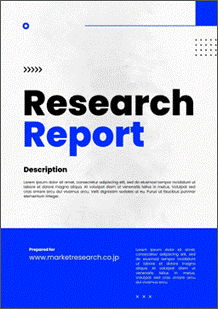 | • レポートコード:D-MOR01133 • 出版社/出版日:Mordor Intelligence / 2019年12月26日 • レポート形態:英文、PDF、108ページ • 納品方法:Eメール(受注後2-3営業日) • 産業分類:建設 |
| Single User | ¥481,000 (USD3,250) | ▷ お問い合わせ |
| Multi User | ¥555,000 (USD3,750) | ▷ お問い合わせ |
| Global Site License | ¥962,000 (USD6,500) | ▷ お問い合わせ |
• お支払方法:銀行振込(納品後、ご請求書送付)
レポート概要
United Kingdom White Cement Market – Growth Trends and Forecast (2019 – 2024)
Market Overview
The United Kingdom White Cement market is estimated to register a CAGR of 2.19%, during the period of 2019-2024. The major factors that are driving the growth of the market studied are the rising demand from the infrastructure sector through government spending. The raw materials required for manufacturing white cement is slightly different from that of the raw materials needed for grey cement manufacturing. Hence, the high production cost of the white Portland cement is restricting the growth of the market.
Key Market Trends
Increasing demand from Non-residential segment
There is an increasing demand from Non-residential segment for the United Kingdom white Cement market. In Non-residential segment, Industrial/Institutional sub segment dominated the volume consumption and revenue. The industrial and institutional segment uses white cement for repairs- and tiles and pavers-related works. This segment is seen to use white cement in improving the external facades of their establishments. The usage of white concrete, apart from dry mixes, white cement-based tiles and floorings, and white cement-based adhesives, is beginning to pick up.
In 2018, commercial construction is the second-largest value provider for the overall construction industry in the United Kingdom with offering nearly 25% market share, including repair and maintenance. In 2018, over 400 individual infrastructure projects were completed and moved to the operational phase, including major projects, such as the redevelopment of London Bridge Station and the GBP 63 million Rossall Coastal Defense Scheme. All the aforementioned factors, in turn, are expected to increase the demand for United Kingdom White Cement Market in the Non-residential segment during the forecast period.
Type I cement to Dominate the Market
Type I Cement is manufactured with selected raw materials to ensure negligible amounts of iron and manganese oxides to avoid producing the gray color of normal Portland cement. Portland Cement Type I can be used for all types of architectural or structural concrete construction where a whiter or brighter color may be needed. It is a general-purpose white cement where the special properties of other types are not required. This product type meets ASTM C150 Standard Specification for Portland Cement.
Type I Portland Cement provides an opportunity to have a brilliant color for concrete or mortar as it is ideal for a variety of architectural projects.Type I white Portland cement is used as a base to produce vibrant and true colors prized in almost any architectural concrete application. This product type may also be used to satisfy low alkali requirements.Thus, the favorable properties exhibited by Type I is expected to drive the market in the region, during the forecast period.
Competitive Landscape
The white cement production in the United Kingdom is negligible. However, the market studied is majorly dominated by foreign players, who have acquired or collaborated with domestic companies in the country. The major companies are CEMEX S.A.B. de C.V, HeidelbergCement AG, Tarmac, Aggregate Industries and Breedon Group PLC among others.
Reasons to Purchase this report:
The market estimate (ME) sheet in Excel format
Report customization as per the client’s requirements
3 months of analyst support.
1. Introduction
1.1 Study Deliverables
1.2 Study Assumptions
2. RESEARCH METHODOLOGY
3. EXECUTIVE SUMMARY
4. MARKET INSIGHT
4.1 Market Drivers
4.1.1 Growing Demand from the Construction Industry
4.2 Market Restraints
4.2.1 High Production Cost
4.3 Industry Value Chain Analysis
4.4 Industry Attractiveness – Porter’s Five Forces Analysis
4.4.1 Bargaining Power of Suppliers
4.4.2 Bargaining Power of Consumers
4.4.3 Threat of New Entrants
4.4.4 Threat of Substitute Products and Services
4.4.5 Degree of Competition
4.5 Import-Export Trends
4.6 Price trends
5. MARKET SEGMENTATION
5.1 By Type
5.1.1 Type I
5.1.2 Type III
5.1.3 Other Types
5.2 By Application
5.2.1 Residential
5.2.2 Non-residential
5.2.2.1 Commercial
5.2.2.2 Infrastructure
5.2.2.3 Industrial/Institutional
6. COMPETITIVE LANDSCAPE
6.1 Market Ranking Analysis
6.2 Strategies Adopted by Leading Players
6.3 Company Profiles
6.3.1 Aggregate Industries (LafargeHolcim Ltd)
6.3.2 Boral
6.3.3 Breedon Group PLC
6.3.4 CBR Heidelberg Cement
6.3.5 Cementir Holding
6.3.6 Cementos Tudela Veguin
6.3.7 CEMEX SAB de CV
6.3.8 Cimsa
6.3.9 CRH
6.3.10 HeidelbergCement AG
7. MARKET OPPORTUNITIES AND FUTURE TRENDS
7.1 Growing Investment on Infrastructure